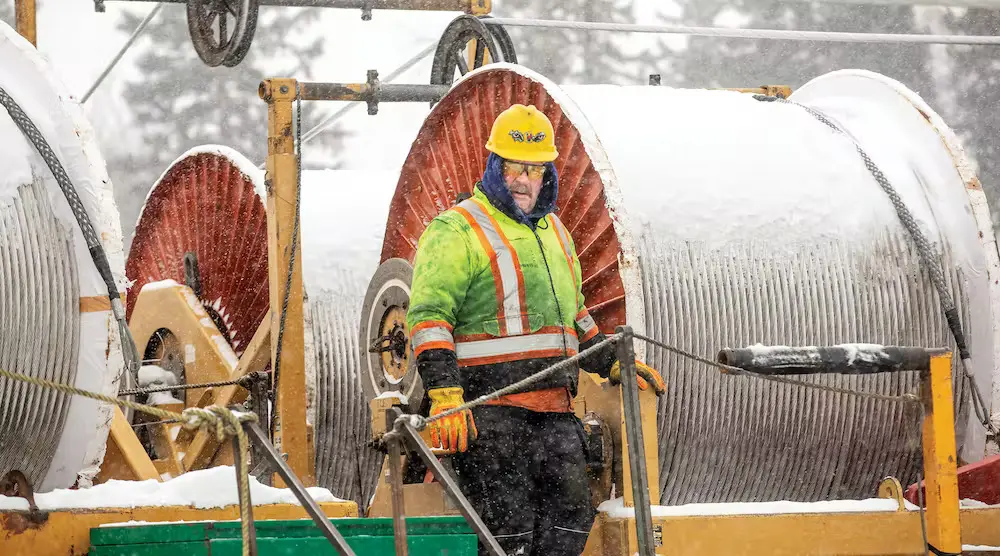March 2, 2020
Working in Winter Weather
Valard is training workers to stay safe and providing them with proper personnel protection equipment.
During the winter construction season, Valard crews are continually exposed to extreme conditions. Temperatures can plunge to -35 deg C (-30 deg F) with extreme wind chills, driving temperatures to below -40 deg C (-40 deg F).
In addition to the extreme temperatures, crews encounter everything from light snow to blizzards, creating poor driving conditions. Extreme weather can lead to an increased chance of frostbite and hypothermia, and can also increase risks for slip and trip hazards and motor vehicle incidents.
Communicating with Crews
Crews must maintain constant communication during any weather, but it is especially critical during severe conditions. A large number of Valard’s projects can span several hundred kilometers with conditions varying significantly across the project. The communication of crew locations and current weather conditions is a first line of protection.
Communication on the project includes the daily tailboards that cover Valard’s safe work procedures for cold weather work. The linemen also rely on the “buddy” system to let workers know if they are feeling the effects of the cold or if they notice potential frostbite on exposed skin on anyone on the crew.
Valard follows The American Conference of Governmental Industrial Hygienists (ACGIH) established Threshold Limit Values for utilization in cold work environments (see table). This is presented to the crews as part of the Cold Weather Safe Work Procedures.
Workers are trained to recognize the risk factors that increase the health effects of cold exposure. They must also be well-versed in appropriate first aid treatment including rewarming procedures.
